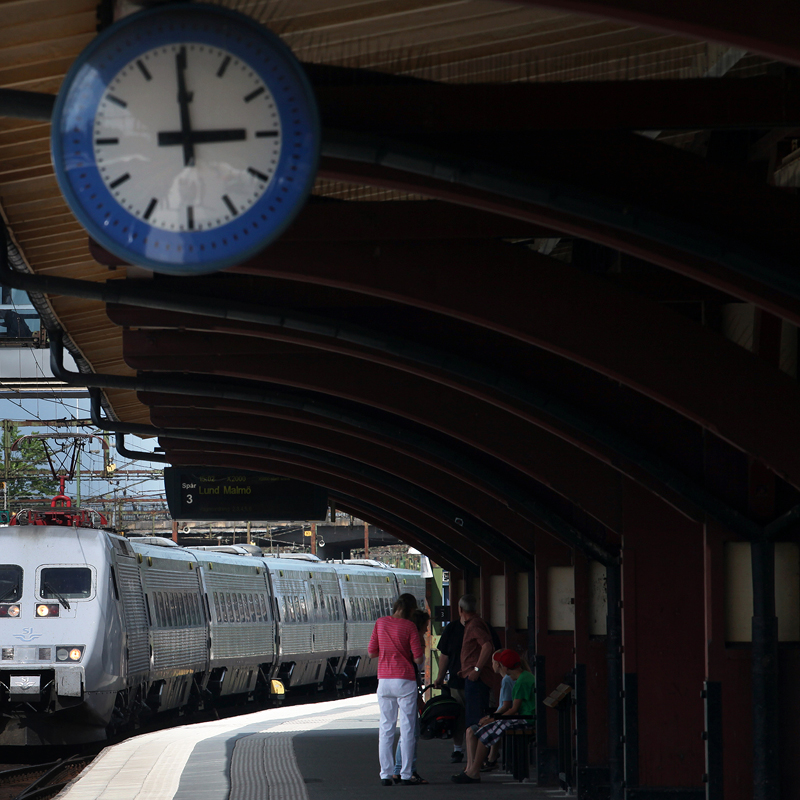Steely strength and speed through the decades
When Swedish state railway company SJ ordered a fleet of high-speed trains in the late 1980s, they needed a solution that would be both safe, comfortable and cost-effective in the long term. The X2000 trains were manufactured by ABB of Outokumpu stainless steel. Today, two decades later, the trains are undergoing a full technical and interior upgrade.

When Swedish state railway company SJ ordered a fleet of high-speed trains in the late 1980s, they needed a solution that would be both safe, comfortable and cost-effective in the long term.
The X2000 trains were manufactured by ABB and introduced into service between 1990 and 1998. The material of choice for the train frames was Outokumpu stainless steel from Swedish Avesta mill.
Today, two decades later, the trains are undergoing a full technical and interior upgrade. However, the original steel frames remain in tact and are expected to stay in service for another two decades, saving cold hard cash and the planet's natural resources.
Detailed analysis and advanced design
The X2000 trains have a special design including a tilting system and radial bogies, which allow for a high speed of 125 miles per hour on curved tracks, without compromising passenger comfort and safety. The trains operate mainly between big cities like Stockholm, Copenhagen and Gothenburg. ABB's decision to use stainless steel as the frame material was based on thorough lifecycle analysis, which calculated that in the long-term stainless steel was a lighter, safer and cheaper option than aluminum or carbon steel.
For instance, the savings in maintenance costs per railcar over a period of 30 years were estimated at 100,000 Swedish kronor (ca. USD 17,500 today), and the weight reduction per car was about 20% compared to carbon steel. The lighter build also means that less energy is needed to propel the train, which translates into considerable energy savings: an estimated 800,000 kilowatthours per car over a period of 30 years.
“The trains have a truly advanced design with influences from aircraft architecture,” says Outokumpu technical market development expert Claes Tigerstrand. “The frames are lightweight in build but still provide the stiffness and strength needed for high-speed trains.”
“The frame has a high level of bending stiffness which reduces vibrations and increases travel comfort”, adds Carl Jallinder-Björkman, Technical Project Manager from SJ, who is in charge of the X2 Technical upgrade. “In addition, the stainless steel grade has excellent impact resistance in a collision situation, improving passenger safety.”
Combined with lower maintenance costs and long service life, stainless steel – an austenitic grade, which today is called Forta 304/4301 in cold-worked condition for enhanced strength – was the optimal choice for the fast and firm train frames.
Cost-effective and sustainable solution
The X2000 upgrade project, currently underway, promises to return the entire train fleet back to service with improved reliability and comfort by 2018.
According to Jallinder, being able to upgrade the fleet and reuse the original train frames is a major gain for SJ.
“For one, upgrading is about four times cheaper than buying new trains. In addition, this decision supports SJ’s long-term corporate social responsibility strategy; the environment is of major importance for us, and upgrading the X2 fleet instead of having to invest in new vehicles has a significant positive impact on our environmental footprint”, Jallinder explains.
“This application highlights how crucial it is to apply lifecycle thinking when choosing materials, something Outokumpu has always encouraged customers to do,” adds Tigerstrand. “Looking at both costs and environmental impacts, choosing the right, sustainable stainless steel really pays off.”
Published sept. 12, 2016
